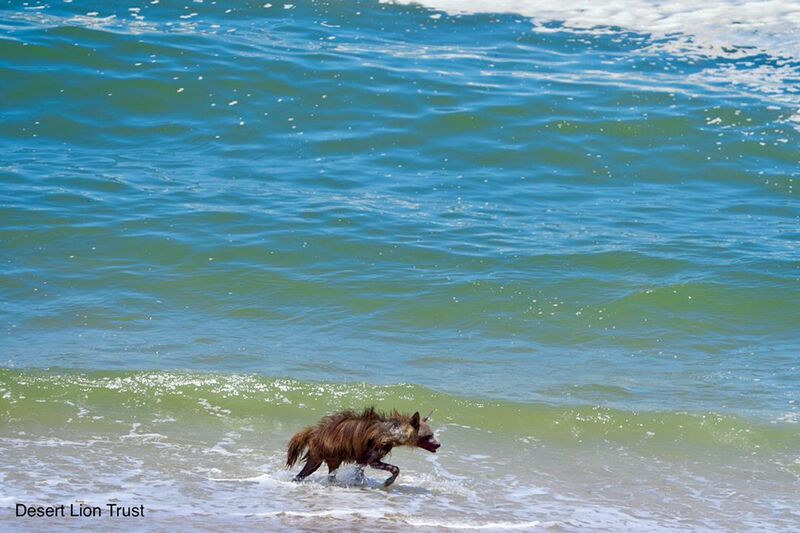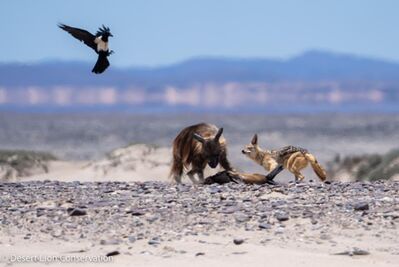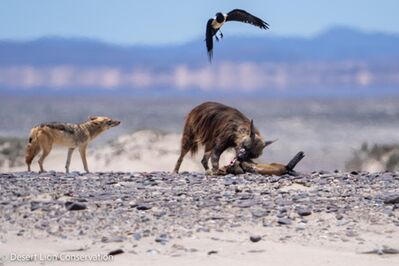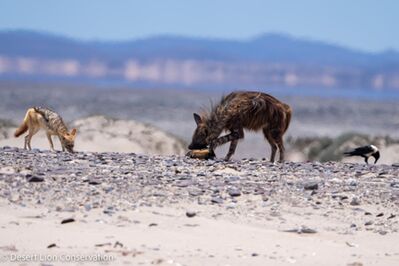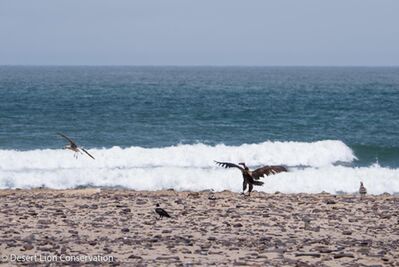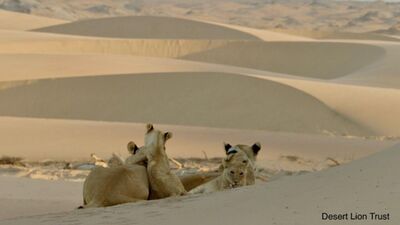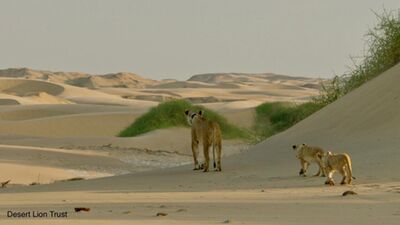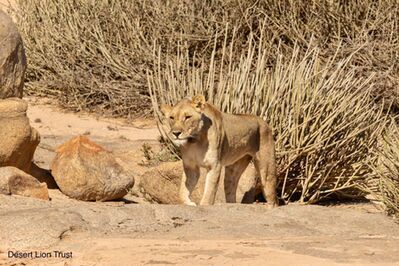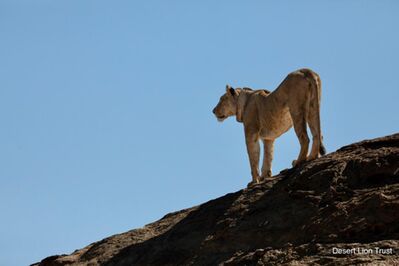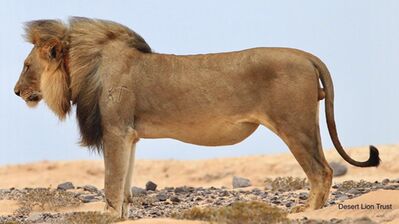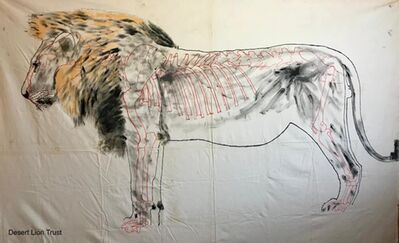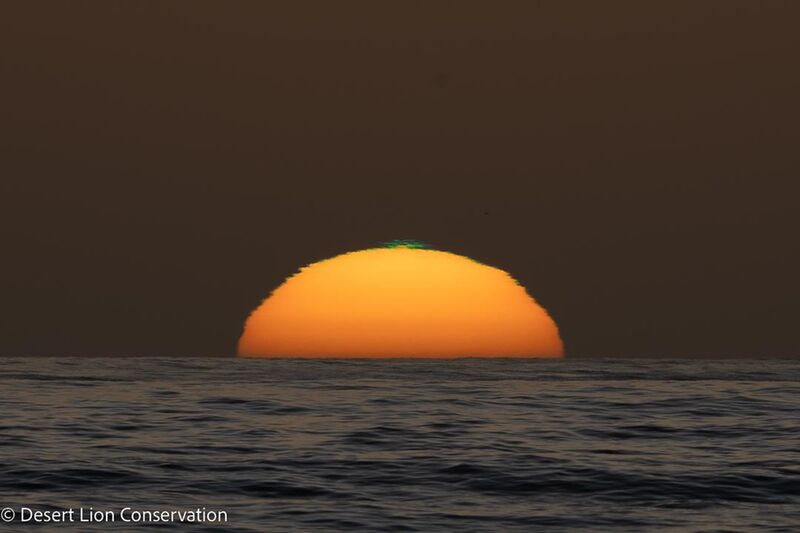Coastal movements and human-lion conflict management at Torra Bay
Friday 2 December 2022
Mitigating potential conflict between coastal lions and anglers during 2022 Torra Bay Holiday Period
During the past year several groups of lions have frequented the coastal habitats and have utilised marine food sources (mainly Cape fur seals) between the Koigab seal colony, the Uniab Delta and the Hoanib River mouth. The discovery of Cape fur seals and other marine food items by the Desert lion population is a significant development from both a biological and conservation point of view. From the biological side, it is one of a few places on the Planet where a large terrestrial carnivore species is utilising food resources from two different trophic zones, which has benefits to the flow of nutrients between the zones and is important to global food webs. Desert-adapted lions have large home ranges to cope with the variability and low density of prey animals. In recent years this has resulted in all prides and groups of lions being involved in human-lion conflict. Notwithstanding, those lions that have subsequently discovered the marine food resources have, however, not returned to the Conservancy areas where people live with livestock. It is important for the conservation of the Deseret lion population that they continue to have access to the marine food resources as an alternative to livestock.
Disturbance to the lions when they are on the coast is a major concern that can lead to them avoiding the area. Due to the harsh environmental conditions along the coast, the lions are extremely vulnerable, with no cover or anywhere to hide. Surf fishing as a form of tourism, with people driving and walking along the beaches, is not compatible with viewing lions in such an open & exposed environment. Towards the end of the 2021/2022 Torra Bay season there were a number of incidents between fishermen and a lioness that led to conflict with the lioness becoming aggressive and even charging the vehicles.
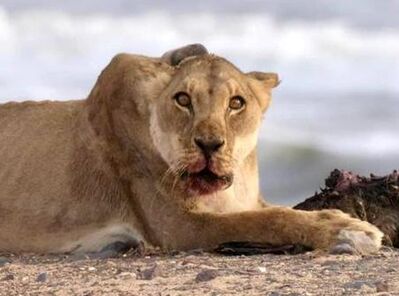
Aggressive lioness near Torra Bay in Jan 2002 (source unknown)
The Ministry of Environment, Forestry & Tourism (MEFT) and DLCT are collaborating to address potential incidents of conflict. The following management plan and protocol was developed to mitigate and prevent such incidents, and we call on all visitors to adhere to the guidelines for their own safety and to help protect these unique lions during the upcoming Torra Bay holiday season.
The protocol consists of the following requirements and activities:
- All lions will be fitted with satellite collars.
- The lions will be tracked on an hourly basis and Torra Bay Management will be informed of the positions of the lions every day.
- When lions visit the coast and are feeding on a seal carcass, a small section of the beach will be closed off temporarily.
- A detailed map was developed of potential blocking points to protect a section of the beach where lions are active.
- Information will be provided to the Torra Bay Office and updated daily.
- Geo-fencing triggers will be developed and automated alerts will be sent to a relevant list of emails and cell phone numbers.
- If at all possible, tourist need to be informed of the following rules: no off-road driving, no walking at night, and vehicles must be in camp between sunset and sunrise.
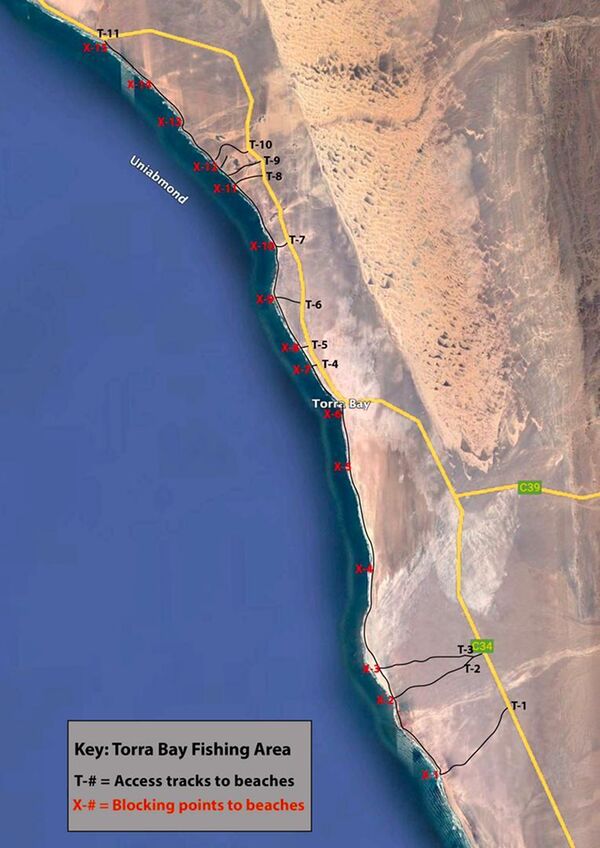
Map showing the Torra Bay fishing area, the access road and the potential blocking points to temporarily close off a section of the beach.
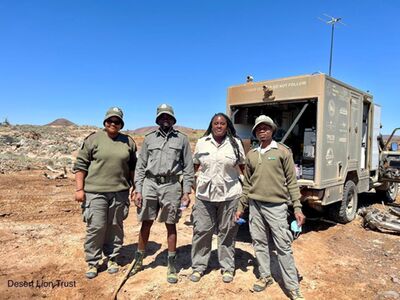
Some members of MEFT that will be assisting at Torra Bay.
Coastal activities
Although most of the coastal lions have currently moved inland, they are expected to return at any time. Gemsbok, springbok and ostriches still regularly use the Uniab Delta and surrounding areas. Brown hyaenas, jackals and even vultures and the occasional whale have been observed in the area over the past month.
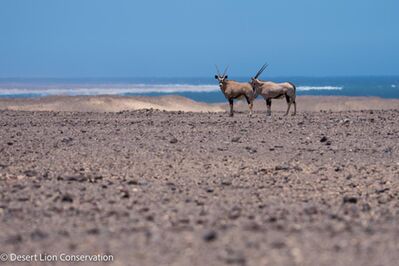
Gemsbok at the mouth of the Uniab river.
Brown hyaenas comb the beaches and compete with jackals, crows and even vultures for food
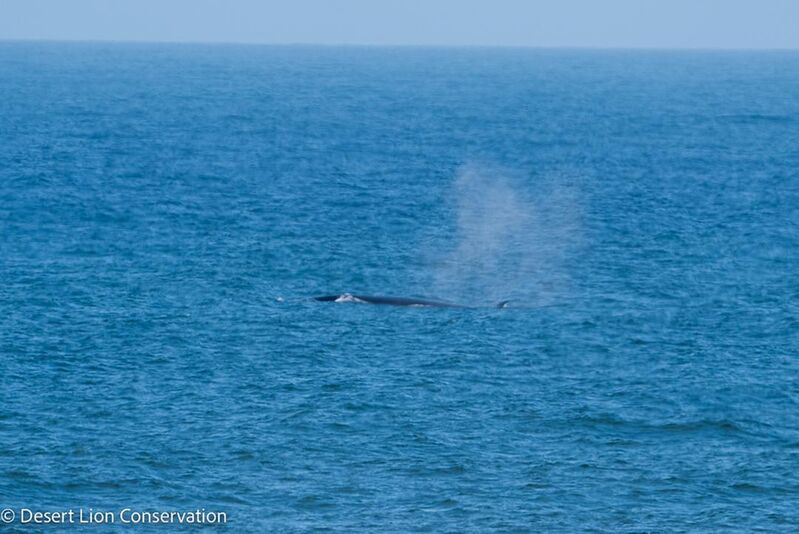 Large baleen whale south of the Hoanib River.
Large baleen whale south of the Hoanib River.
Floodplain Pride
The two Orphan lionesses and cubs have spent most of the past month on the Hoanib Floodplain. One of the small female cubs did not survive the long distances they had to move in search of food. The two remaining cubs (a female and a male) are in a good condition and are now following the lionesses on their travels through the dunes and around the Floodplain. Xpl-114 “Charly” have met up with the Orphans on several occasions. She got into a serious altercation with Xpl-106 “Alpha” (mother of the two small cubs) that left her with a few wounds. Notwithstanding, the estranged sisters are spending more and more time near each other, and the potential of re-uniting remains.
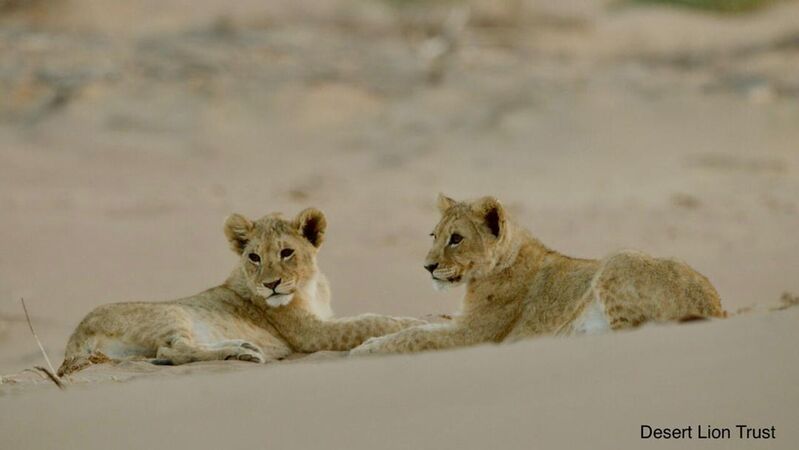
The Orphan lionesses and the two small cubs
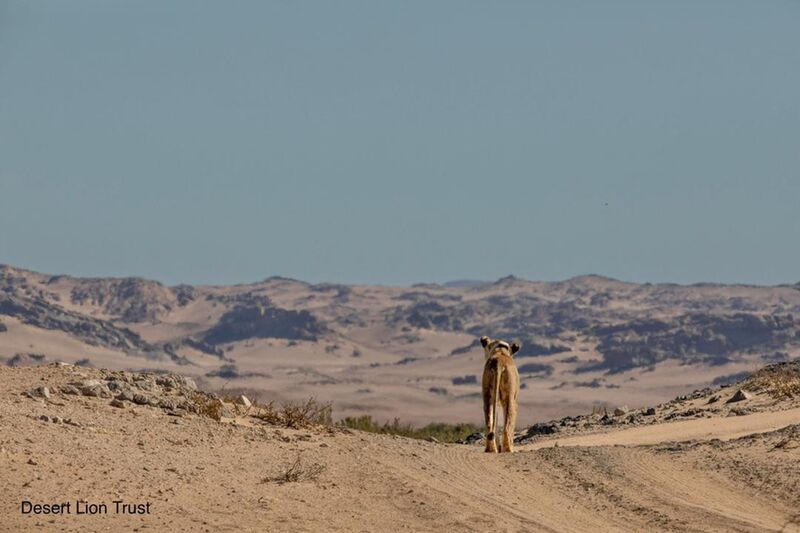
Xpl-114 “Charly” after the fight with Xpl-106 “Aplha”
Obab Pride
The satellite collared lioness Xpl-108 spent some time at the Uniab Delta and along the coast before moving inland. She is currently in the Huab river just inside the Skeleton Coast Park.
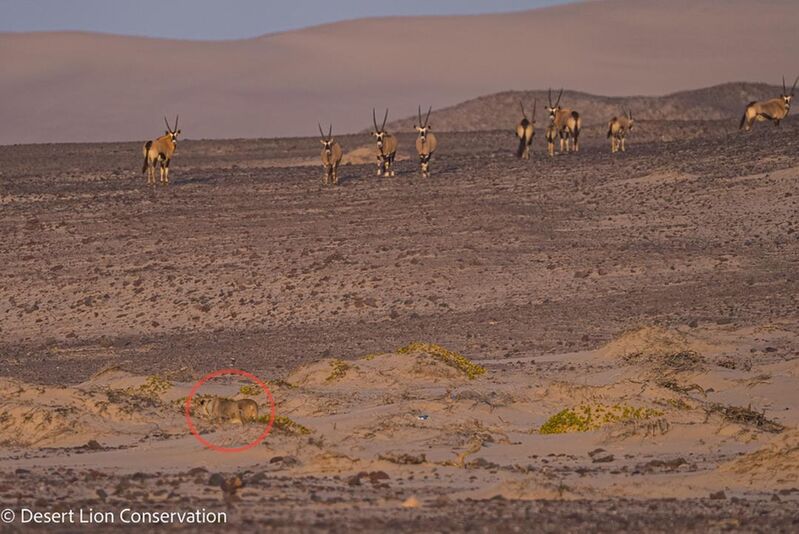
Lioness hunting gemsbok at the Uniab Delta.
Lioness moving inland towards the Koigab river. Video - 1
Xpl-108 reaching the Huab river during at twilight - Video - 2
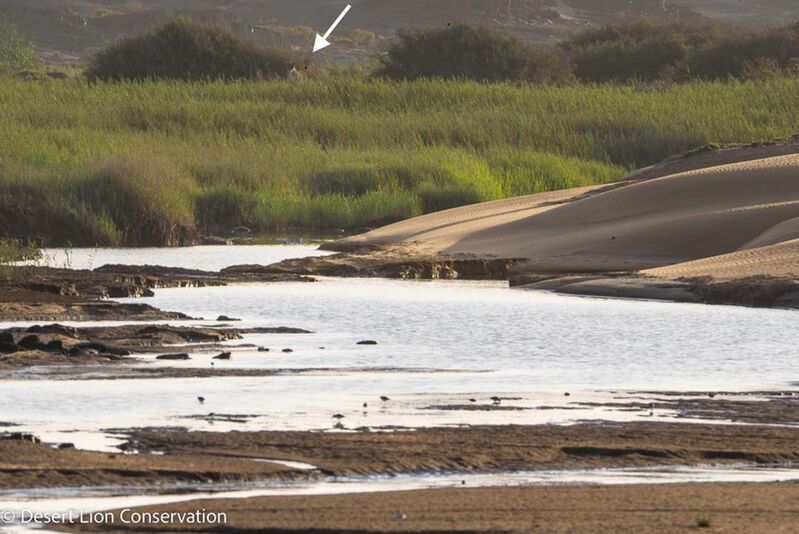 Lioness Xpl-108 searching for gemsbok at the springs in the lower Huab river.
Lioness Xpl-108 searching for gemsbok at the springs in the lower Huab river.
The Terrace Male Xpl-68
The articulation of the skeleton of the Terrace Male (Xpl-68) that walked to Angola a few times during 2013/2014 has also begun. His skeleton will accompany that of the Queen “Xpl-10”.
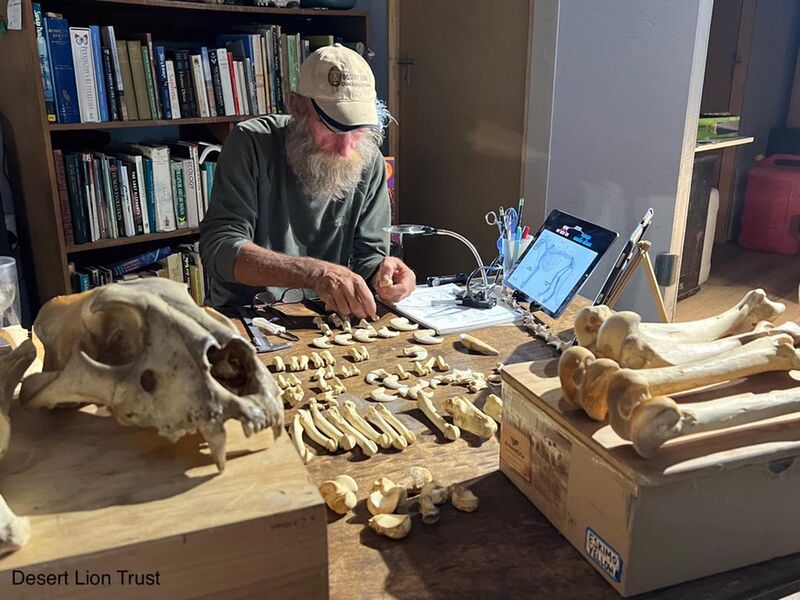
The process of articulation the skeleton of Xpl-68 (the Terrace Male).
Sunset
A small sliver of a green flash was photographed during sunset at the Huab river.

